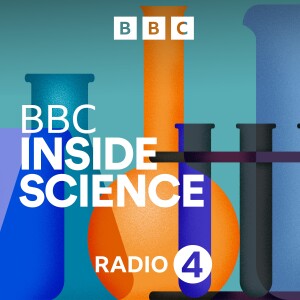
Meeting Mars, Melting Ice, Ozone on the Mend Again, and A Sea Cacophany
 2021-02-11
2021-02-11
Download
Right click and do "save link as"
Victoria Gill and guests discuss the signs and symptoms of melting ice and anthropogenic climate warming, illicit CFC production and the racket we make in the seas.
As two robotic missions from UAE and China arrive at Mars , and a third from NASA arrives next week, UK astronaut Tim Peake talks of the international collaboration in Mars research that is to come. And continuing BBC Inside Science's look at some of the issues facing COP26 delegates to Glasgow this autumn, Victoria is joined by cryosphere scientist Dr Anna Hogg,
Anna studies – sometimes from space - how polar and Greenland ice sheets are melting and shifting as our climate warms. But those giant volumes of ice and concomitant rising sea levels might not be the only threat to people’s lives. It may be that the recent deadly flash flood in India was a result of a swiftly melting Himalayan glacier.
The Montreal treaty - prohibiting the production of CFCs to allow the man-made polar hole in the Ozone layer identified back in the 1980s to repair - has long been cited as the classic example of an effective international agreement to protect earth's environment. But just a few years ago in 2018 Luke Western and colleagues identified not just that CFC production was suddenly and unexpectedly rising, but that it was mainly emanating from an area in eastern China. It was speculated then that their use in foams for buildings was happening illicitly on a large scale. This week, they happily announce that those emissions seem to have ceased, and that the target of a healthy ozone layer is back on track.
The oceans are, since man first took to the waves, a noisy place. In a comprehensive paper published last week in the journal Science Carlos Duarte and colleagues describe how huge an impact the many anthropogenic noises that echo for miles across the sea beds have on virtually all aquatic life. He argues that it is one stressor, rather like CFCs, that we could and should take swift and effective action to address, that the time for that is ripe, and that doing so will see a swift rebound in many aquatic ecosystems. Humans are not naturally adapted to hear the noise underwater, but to illustrate the point, co-author digital artist Jana Winderen has made an acoustic demonstration for your benefit, of quite how noisy neighbours we are
Also, for listeners on BBC Sounds, the BBC's Roland Pease gives an update on where and how scientists think the covid-19 epidemic began, after a WHO team of scientists report on their recent mission to Wuhan and the infamous market. As Roland and WHO delegate Peter Daszak surmise, we still don't quite know, but it wasn't in a lab.
Presented by Victoria Gill
Produced by Alex Mansfield
Made in Association with The Open University.
view more
More Episodes
Micro Nuclear Reactors
 2024-06-20
2024-06-20
 2024-06-20
2024-06-20
Is gene therapy the future?
 2024-06-13
2024-06-13
 2024-06-13
2024-06-13
Ugly animals and asteroid Apophis
 2024-05-30
2024-05-30
 2024-05-30
2024-05-30
Can we get plastic waste under control?
 2024-05-23
2024-05-23
 2024-05-23
2024-05-23
Do we need a new model of cosmology?
 2024-05-16
2024-05-16
 2024-05-16
2024-05-16
Bird flu outbreak in cows
 2024-05-09
2024-05-09
 2024-05-09
2024-05-09
200 years of dinosaur science
 2024-05-02
2024-05-02
 2024-05-02
2024-05-02
Inside Your Microbiome
 2024-04-25
2024-04-25
 2024-04-25
2024-04-25
Our Accidental Universe
 2024-04-18
2024-04-18
 2024-04-18
2024-04-18
World’s oldest forest fossils
 2024-04-11
2024-04-11
 2024-04-11
2024-04-11
How pure is the water from your tap?
 2024-04-04
2024-04-04
 2024-04-04
2024-04-04
Dimming the Sun
 2024-03-28
2024-03-28
 2024-03-28
2024-03-28
Laboratory-Grown Meat
 2024-03-21
2024-03-21
 2024-03-21
2024-03-21
The Gulf Stream’s tipping point
 2024-03-14
2024-03-14
 2024-03-14
2024-03-14
Ancient Roman writings revealed
 2024-03-07
2024-03-07
 2024-03-07
2024-03-07
When brains and computers meet
 2024-02-29
2024-02-29
 2024-02-29
2024-02-29
Hydrogen and the race to net zero
 2024-02-22
2024-02-22
 2024-02-22
2024-02-22
A New Volcanic Era?
 2024-02-15
2024-02-15
 2024-02-15
2024-02-15
Understanding Flood Forecasting
 2024-02-08
2024-02-08
 2024-02-08
2024-02-08
012345678910111213141516171819
Create your
podcast in
minutes
- Full-featured podcast site
- Unlimited storage and bandwidth
- Comprehensive podcast stats
- Distribute to Apple Podcasts, Spotify, and more
- Make money with your podcast
It is Free
- Privacy Policy
- Cookie Policy
- Terms of Use
- Consent Preferences
- Copyright © 2015-2024 Podbean.com


